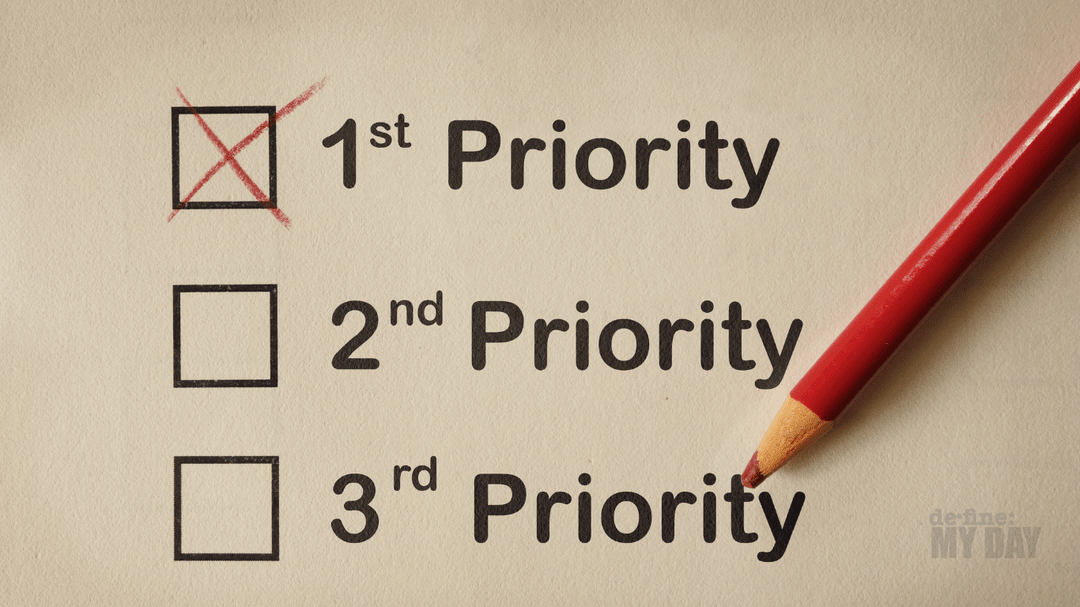
How to Prioritize When Everything Feels Urgent
Share
We’ve all been there: the email inbox is overflowing, your to-do list is threatening to spill off the page, and you’re faced with multiple “urgent” tasks demanding your attention all at once. It’s like trying to juggle chainsaws while balancing on a tightrope—fun, right? When everything feels equally pressing, it can be hard to know where to start. But don’t worry. With a few expert-backed strategies, you can cut through the chaos and prioritize like a pro.
The Psychology Behind Feeling Overwhelmed
Before we jump into solutions, let’s talk about why everything feels so urgent. Psychologists have coined a term for this: "urgency bias." This is the tendency to prioritize tasks that feel urgent, even if they aren’t important. The flood of notifications, deadlines, and constant interruptions in our modern work lives can lead us to overestimate the importance of immediate tasks, pushing truly important work to the back burner.
It turns out, our brains are hardwired for this. Evolutionarily, it was probably useful to respond quickly to urgent threats (like a predator lurking nearby). But in today’s world, a looming deadline isn’t quite the same as a saber-toothed tiger—though it sure feels like one sometimes.
So how do we outsmart our primal brains and focus on what really matters?
1. The Eisenhower Matrix: A Presidential Solution
One of the most time-tested methods for tackling prioritization comes from Dwight D. Eisenhower, 34th president of the United States. During his presidency, Eisenhower had to make countless decisions with conflicting priorities. His solution? A simple but powerful tool now known as the Eisenhower Matrix.
The matrix breaks tasks into four categories:
- Urgent and Important: Do these immediately (e.g., a pressing work deadline).
- Important but Not Urgent: Schedule these for later (e.g., long-term projects or self-development).
- Urgent but Not Important: Delegate these (e.g., some emails or routine meetings).
- Neither Urgent Nor Important: Eliminate them (e.g., scrolling social media during work).
The key here is to distinguish between urgency and importance. Just because a task feels urgent doesn’t mean it’s the most important thing on your plate. Focus on what will have the greatest long-term impact.
2. Use the “2-Minute Rule” for Small Tasks
Here’s a scenario: You’re trying to focus on an important project, but your phone buzzes with a dozen small but urgent requests. It’s tempting to put everything aside and tackle them all at once. But here’s a better strategy: If a task will take less than two minutes to complete, do it immediately. For anything that takes longer, schedule it for later.
This rule, popularized by productivity expert David Allen in his book Getting Things Done, works because it prevents small tasks from piling up into overwhelming mountains of work.
Think of these quick wins like swatting away annoying flies—they won’t eat up your day, but they stop the buzzing distractions so you can focus.
3. The Pareto Principle: 80/20 Your To-Do List
The Pareto Principle (also known as the 80/20 rule) suggests that 80% of your results come from 20% of your efforts. In other words, a small portion of your tasks will likely have the greatest impact on your goals.
How do you apply this to your to-do list? Look at your tasks and ask yourself: Which ones will move the needle the most? These are your 20%—the tasks that deserve top priority. By focusing on this high-impact work, you’ll often find that many of the “urgent” tasks are less important than they seem.
4. Time-Blocking: Make Appointments with Yourself
It’s easy to get lost in the swirl of competing priorities, but one way to stay grounded is by time-blocking your day. Time-blocking means setting aside specific chunks of your day for focused work, where you tackle one task or project without interruptions.
For example, you might block 9–11 a.m. for deep work on a high-priority project, leaving other tasks for later in the day. During that time, treat it like a meeting with yourself—non-negotiable and free from distractions. Time-blocking not only helps you stay on track but also eliminates decision fatigue from constantly having to figure out “what’s next.”
And here’s the best part: It gives you a built-in excuse to say “no” to non-essential interruptions. “Sorry, I’m booked” works wonders.
5. Give Yourself a Priority Check: The MIT Method
No, we’re not sending you to engineering school—MIT stands for Most Important Task. This strategy is about identifying the one, two, or three tasks each day that will have the most significant impact on your goals. Before you dive into the weeds of your daily workload, ask yourself, “If I only accomplish one thing today, what should it be?”
By focusing on your MITs, you prevent yourself from getting bogged down in low-impact work that doesn’t move the needle. And here’s a bonus: The sense of satisfaction that comes from completing your MITs gives you momentum for the rest of the day.
6. “Eat That Frog” First
Best-selling author Brian Tracy coined this vivid metaphor in his book Eat That Frog! The idea? If you tackle your most dreaded, challenging task first thing in the morning (a.k.a. “the frog”), the rest of your day will feel easier by comparison. Procrastination thrives when we put off hard or uncomfortable tasks, and knocking them out early gives you a productivity boost for the rest of the day.
It may sound painful, but trust us—after you’ve eaten your frog, everything else will feel like dessert.
The Takeaway: Prioritize with Purpose
When everything feels urgent, the real challenge is cutting through the noise to figure out what truly matters. By using the Eisenhower Matrix, the 2-Minute Rule, the Pareto Principle, time-blocking, and focusing on your MITs, you’ll be able to prioritize like a pro. Add a dash of frog-eating for good measure, and you’ll conquer your day with clarity and confidence.
Remember: Not every task is as urgent as it seems. The trick is knowing which ones deserve your attention—and then giving them your best effort. Prioritization isn’t about doing more; it’s about doing the right things.
Now, go out there and juggle those chainsaws like a pro—just make sure you’re juggling the right ones!
